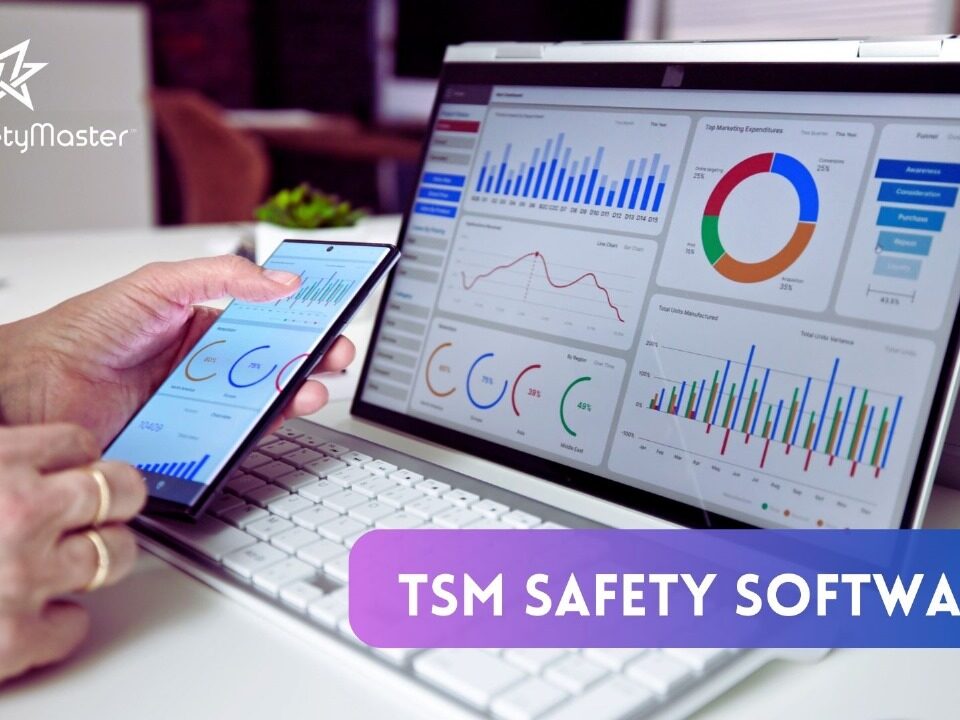Why a Robust Safety Policy is Vital for Every Industrial Plant

Certified Work at Height Safety Audit
June 21, 2023
Empowering Industries with Proactive Electrical Safety: The Safety Master’s Unparalleled Expertise
June 23, 2023In this article, we delve into the significance of safety manuals in any organization. Workplace safety is paramount to employee well-being and company success. However, it is not enough to simply have safety policies in place. A comprehensive safety manual is required to guide employees on how to properly follow safety protocols and handle emergency situations. In this piece, we will explore the preparation and implementation of a well-crafted safety manual. By the end of this article, readers can expect to have a clear understanding of what makes a safety manual effective, and the steps needed to implement one in their workplace.
Introduction
Every workplace must prioritize safety to protect employees, reduce liability, and improve overall performance. However, creating and implementing a comprehensive safety manual can be a daunting task. With so many potential hazards and regulations to consider, it can be difficult to know where to begin.In this article, we will explore the key steps in preparing an effective safety manual. From identifying and assessing potential risks to developing policies and procedures, we will guide you through the process of establishing a safe work environment for your employees. By following these guidelines, you can ensure that your organization is proactive about protecting its workers and minimizing the risk of accidents and injuries
Identifying and assessing hazards:One of the most crucial steps in preparing a safety manual is identifying and assessing potential hazards that can harm employees or damage property. This process involves analyzing past incidents, inspecting the workplace, and identifying potential risks associated with different tasks and equipment.
A comprehensive hazard assessment should consider both physical hazards (e.g., machinery, chemicals, electricity) and non-physical hazards (e.g., stress, ergonomic strains). Once the risks are identified, safety measures should be implemented to mitigate or eliminate them. This may include engineering controls like machine guards or personal protective equipment like hard hats or respirators.
By thoroughly identifying and assessing hazards in the workplace, employers can create a safer environment for their employees to work in. It also helps to reduce the risk of accidents happening on site which may result in injuries or fatalities.
Developing safety policies and procedures:When it comes to developing safety policies and procedures, it’s important to consider the unique needs of your organization. It’s not a one-size-fits-all approach. You need to take into account the different hazards that exist in your workplace, as well as the specific tasks that employees perform. For example, a manufacturing plant will have very different safety policies and procedures than an office building.
One key aspect of developing safety policies and procedures is involving all stakeholders in the process. This includes management, employees, and any other relevant parties. By getting input from everyone involved, you can ensure that your policies are practical and effective.
Developing safe work practices
Developing safe work practices involves identifying potential hazards in the workplace and creating protocols to minimize risk. This can include developing procedures for handling dangerous chemicals, operating heavy machinery, or working at heights. It’s important to involve employees in this process so that they feel ownership over their own safety, and can offer valuable insights into potential hazards.One effective way to develop safe work practices is to conduct a job hazard analysis (JHA), which involves breaking down each task involved in a job and identifying potential hazards associated with each step. By doing so, employers can develop safe procedures for each task, ensuring that employees are equipped with the knowledge and tools they need to stay safe on the job.
Another critical element of developing safe work practices is ongoing training and education. Employers should provide regular safety training sessions for all employees, as well as refresher courses for those who have been on the job for some time. This helps ensure everyone is up-to-date on best practices and able to identify potential hazards before they become serious problems. Ultimately, by investing in developing safe work practices, employers can create a safer workplace environment that benefits everyone involved.
Roles and responsibilities for safety management:The success of any safety program depends on the commitment and involvement of all levels of personnel within an organization. Creating a culture of safety requires everyone to accept responsibility for ensuring that safe work practices are followed. Management has a vital role in establishing policies, procedures, and expectations for workplace safety, as well as ensuring that employees have the necessary resources to carry out their jobs safely.
Effective communication is crucial to ensure that everyone in the organization understands their roles and responsibilities regarding safety management. This includes clear job descriptions that outline safety expectations, regular training sessions on safe work practices, and open lines of communication between employees and management. By promoting a collaborative approach to safety management, organizations can foster a culture of transparency and trust, which can help reduce accidents and injuries in the workplace.
In conclusion, creating a strong foundation for safety management requires everyone in an organization to take responsibility for their actions. By providing clear guidelines for roles and responsibilities related to workplace safety, organizations can create a culture where everyone is invested in maintaining safe work practices. Effective communication between all levels of personnel is key to promoting accountability and collaboration towards achieving a safer workplace.
Safety training and education
Safety training and education is critical for ensuring the effectiveness of your safety management system. All employees who work within the organization must be informed of the safety policies and procedures that have been put in place to promote safe work practices. This will help them understand their role in maintaining a safe working environment, and how they can contribute to the success of the safety management program.In addition to general safety training, it is also important to provide specialized training for employees who work in hazardous environments or perform high-risk tasks. This specialized training will equip them with the knowledge and skills necessary to manage risks effectively while on the job. It also helps ensure that they are fully prepared to handle any situation that may arise.
Organizations should regularly assess employee understanding of safety policies and procedures through quizzes, surveys, and spot-checks. By doing so, it ensures that all employees are on board with maintaining a culture of safety within their workplace. In this way, organizations can create an environment where everyone works together towards achieving common goals- one in which employee wellbeing is prioritized above all else.
Implementation and maintenance of safety manual:After the development of safety policies and procedures, the next step is to implement and maintain them. Implementation involves putting the safety plan into action, while maintenance focuses on consistently reviewing and updating the plan to ensure it remains effective.
To effectively implement a safety manual, a designated safety officer should be appointed to oversee the process. The officer should establish clear communication channels to ensure all employees understand their roles and responsibilities in maintaining a safe work environment.
Regular review of the manual is necessary for its maintenance. Reviewing procedure may involve regular meetings with employees to discuss new hazards or incidents that may have occurred. It is also essential to update and improve policies as required by changing regulations or business processes.
Conclusion
As we conclude this article, it is important to emphasize the significance of safety manuals in any organization. By identifying and assessing hazards, developing safety policies and procedures, developing safe work practices, assigning roles and responsibilities for safety management, providing training and education, implementing and maintaining a safety manual can help prevent accidents and injuries in the workplace. While there may be initial time investment required in creating a comprehensive safety manual, the benefits of prioritizing workplace safety cannot be overstated. By prioritizing employee well-being through an effective safety manual, organizations can create a positive work culture that values not only productivity but also the health and happiness of its employees.
At TSM TheSafetyMaster Private Limited we offer following services
TSM TheSafetyMaster® Private Limited
Unit No 221-451-452, SPL1/J, 2nd & 4th Floor, Sunsquare Plaza Complex, RIICO Chowk, Bhiwadi 301019, Rajasthan, India
Phone: +91 1493 22 0093
Mobile: +91 7665231743/9413882016
Email: info@thesafetymaster.com




